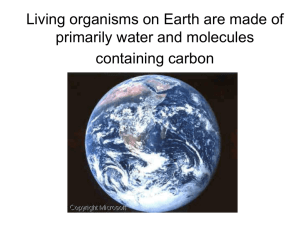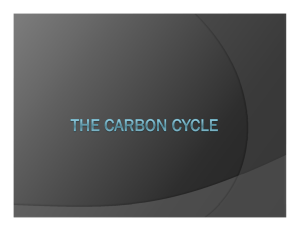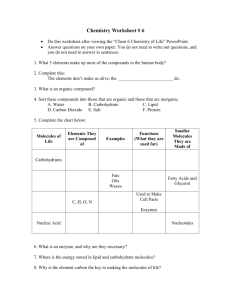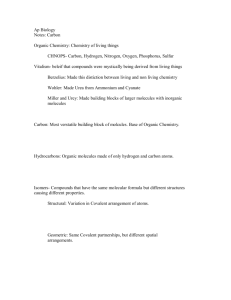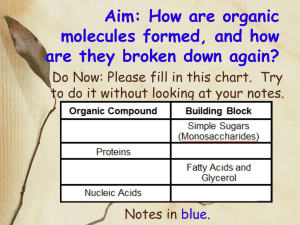Macromolecules
advertisement
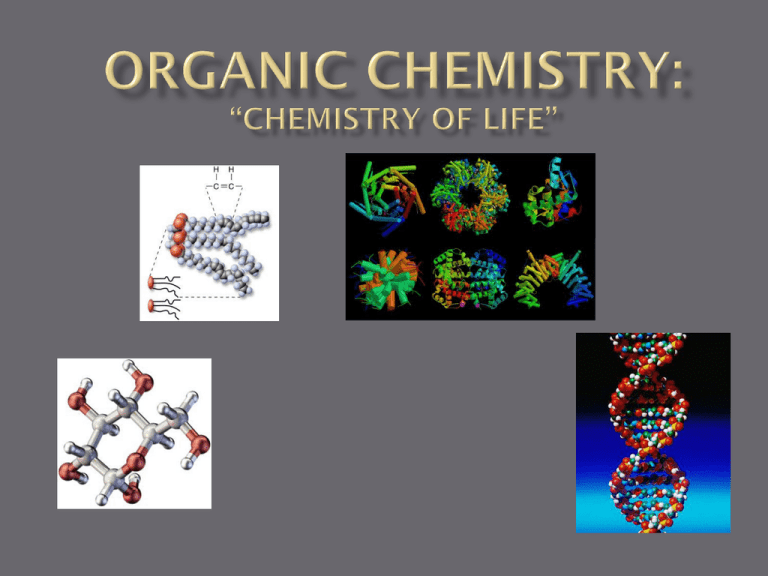
oCompounds containing the element carbon (C) oUsually associated with living things oOther elements commonly found in organic molecules: oHydrogen (H) oOxygen (O) oNitrogen (N) oPhosphorus (P) oSulfur (S) 1. Carbohydrates 2. Lipids 3. Proteins 4. Nucleic Acids o Organic molecules are most often considered “macromolecules” (macro = large) o They are each made of different “building block” molecules called monomers. o 2 monomers can combine to form a dimer (di= two), and many monomers may combine to form a polymer (poly= many) monomer dimer polymer oMonomers join together in a reaction called “dehydration synthesis”. (dehydration = water loss) (synthesize = combine) -So when larger molecules are formed water is released See animation: http://nhscience.lonestar.edu/biol/dehydrat/dehydrat.html H2O H2O oThe opposite of dehydration synthesis is called “hydrolysis” (requires water) • Some organic molecules, like lipids, are said to be hydrophobic -they will not mix with water • Other organic molecules are hydrophilic -they mix well with water -Made of ONLY C H O Simple Sugars -Mono saccharides= “single sugars” (ex: glucose) -Di saccharides= “double sugars” (ex: sucrose, fructose) -for FAST energy GLUCOSE SUCROSE 2. Starch (plants) and Glycogen (animals)-Polysaccharides= “many sugars” -Stored Energy (broken down into sugars later) Glycogen is stored in the liver Starch is stored in seeds, grains and tubers 3. Cellulose-Found ONLY in plants -Structural molecule (makes plants rigid) -Indigestible by animals (“fiber”) Made ONLY of C, H, and O Fats and Oils -LONG TERM energy storage -Made of 1 glycerol molecule & 3 fatty acids (Triglycerides) 3. Phospholipids -cell membranes 4. Steroid hormones -chemical control of some body functions -made from cholesterol Contain C H Nitrogen (N) O - HALF !! the dry weight of your body -VERY LARGE with complex 3-dimensional structures -made of combinations of 20 different amino acids - proteins perform MANY functions: Movement (muscles) Structure (bones) Chemical Regulation (enzymes) Defense (antibodies) Transport (hemoglobin) Nutrition - Made of: C H N O and… Phosphorus (P) Consist of repeating units called nucleotides 1. DNA- forms the genetic code (codes for proteins) 2. RNA- vital part of protein building process
